The conference that I attended in Montreal last weekend ended late Sunday afternoon. Realizing that making it to the airport in time for a return flight to Edmonton that evening would be tight, another Alberta patient and I arranged to stay over and fly home the following evening. That gave us most of Monday to do some sightseeing.
The last time I was in Montreal was over 20 years ago, but Amber had never been and I knew right away that I wanted to show her Old Montreal. Our first stop would be the majestic Notre-Dame Basilica which was built between 1824 and 1829. Since it was located just 1.5 km from our hotel and the weather was gorgeous, we set off on foot.
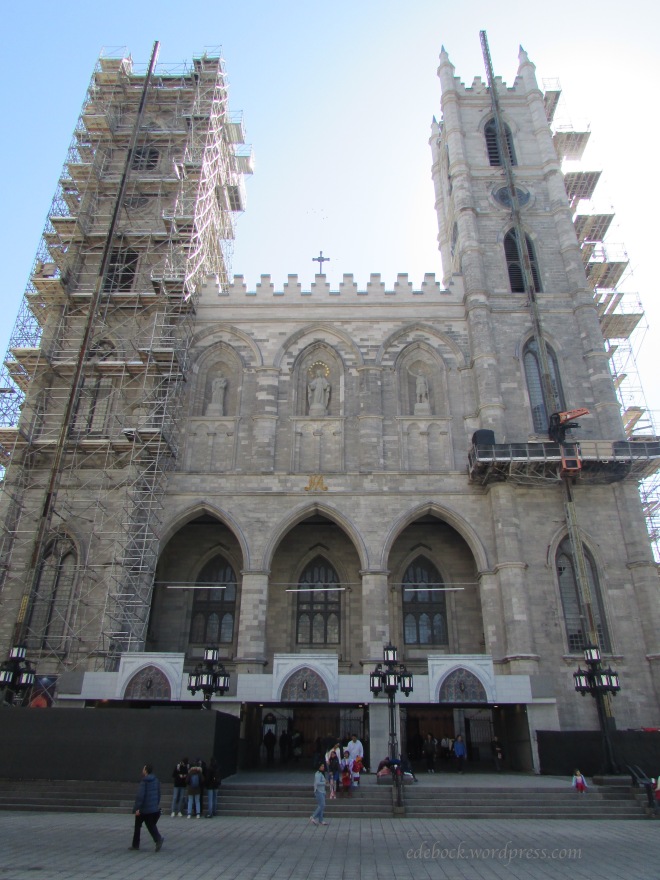
The exterior of the church is undergoing major restoration that isn’t expected to be finished until approximately 2040, but the interior is truly a sight to behold. I think a person could take 100 photos and not even begin to capture every detail! Here is just a taste of what we saw.
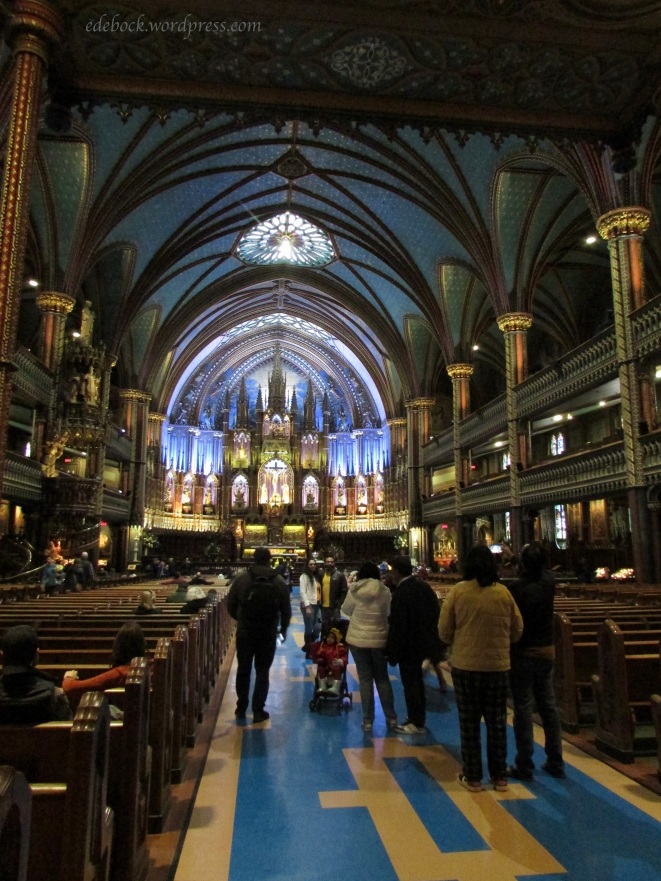
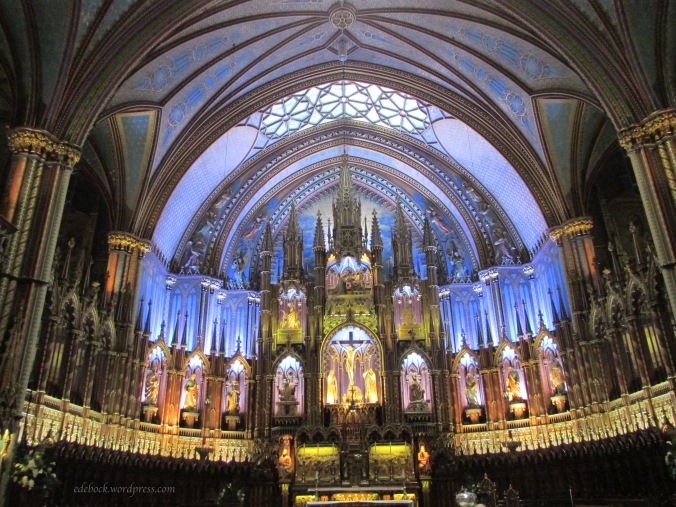
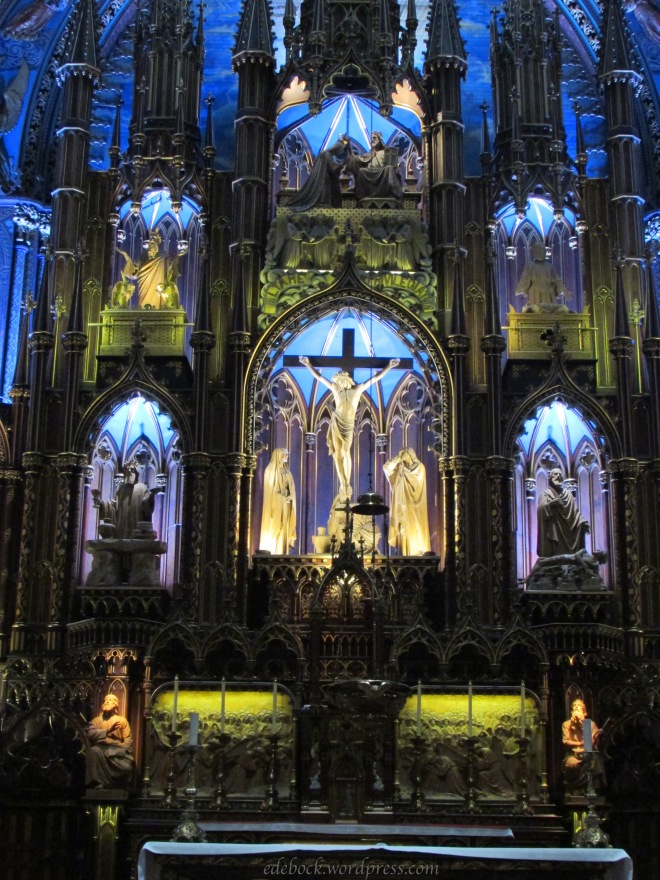
Our next destination was the Old Port and La Grande Roue de Montreal, a 60 metre high ferris wheel, the tallest of its kind in Canada. We knew that the sky was going to darken later in the day due to the highly anticipated solar eclipse, so we wanted to ride the ferris wheel early and enjoy the views of Old Montreal and beyond in full daylight.

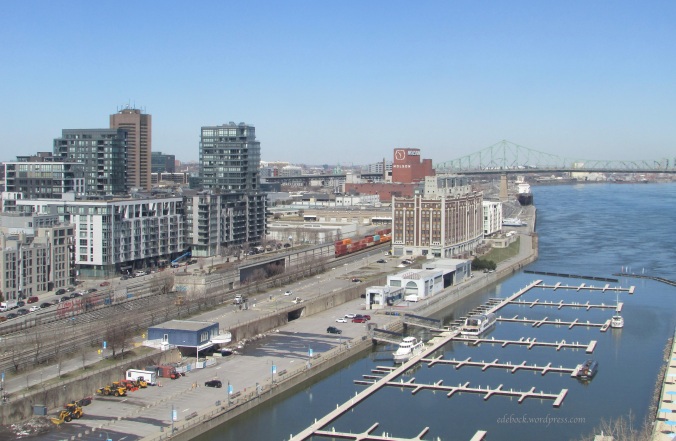
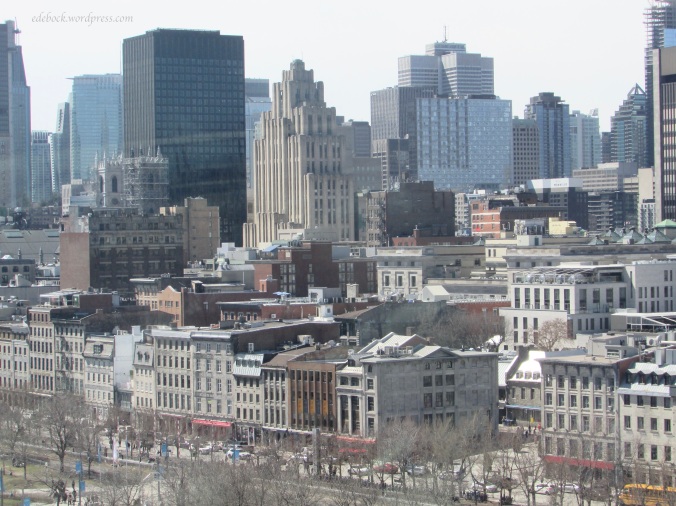
In the next photo, you can see Bonsecours Market in the foreground and Mont Royal with its 33 metre high cross overlooking the city in the background. After our ride, we wandered through the many boutiques in Bonsecours Market.
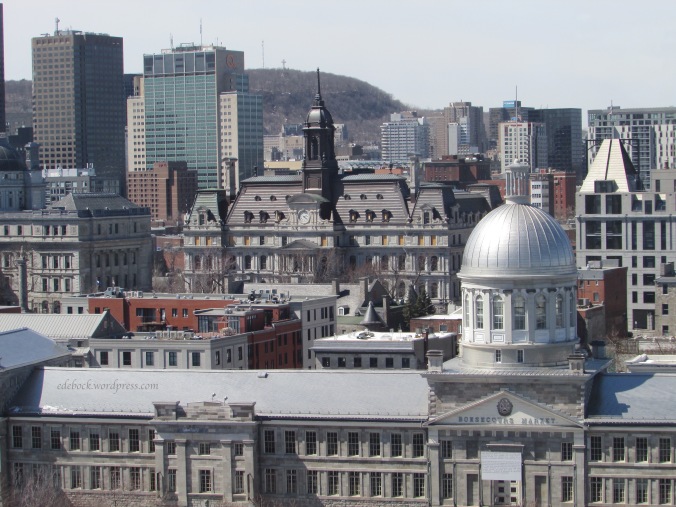
If you look closely at the following photo, you will see a long lineup of people stretching the entire width of the photo. That’s just a fraction of the crowd who were lined up to get solar eclipse glasses that were being given away free! Thankfully, there was no line up waiting to ride the ferris wheel. Each gondola can carry up to 8 people, but we had one to ourselves!
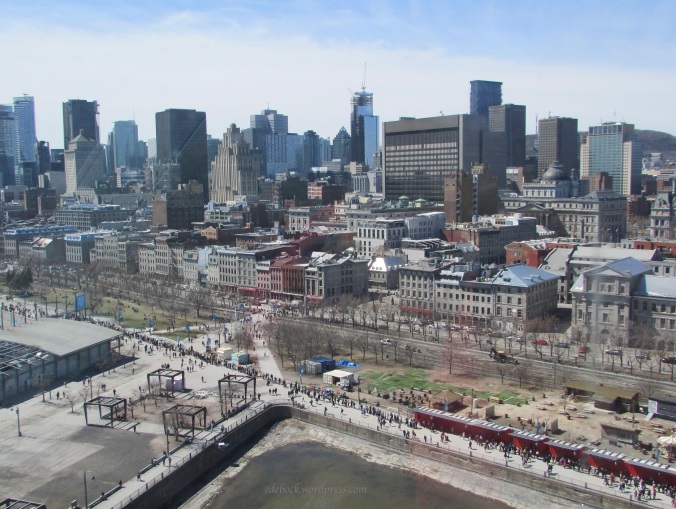
Before going to Montreal, even though I knew that the city was in the path of the total eclipse, I had little interest in actually seeing it. In fact, I had thought that we might just sit it out in a coffee shop somewhere, but Amber was having no part of that! She was determined that we see it and, in retrospect, I’m so glad she was. There was, however, no way that we were going to waste our limited time in Montreal standing in that endless line to get the necessary glasses. On our way to the ferris wheel we had stopped into a couple of shops to see if we could buy some, but those that had had them were completely sold out. Then, just as we approached the area where people were lining up to get the free glasses, we encountered a young man selling them for $5 apiece! Perfect!
After stopping for lunch in a lovely little Italian restaurant housed in a building where Charles Dickens apparently wrote notes for A Tale of Two Cities while visiting Montreal in 1842, we wandered the streets of Old Montreal and began taking glimpses through our eclipse glasses as the moon began to block the sun and the light started to fade. Crowds of people were gathering everywhere!
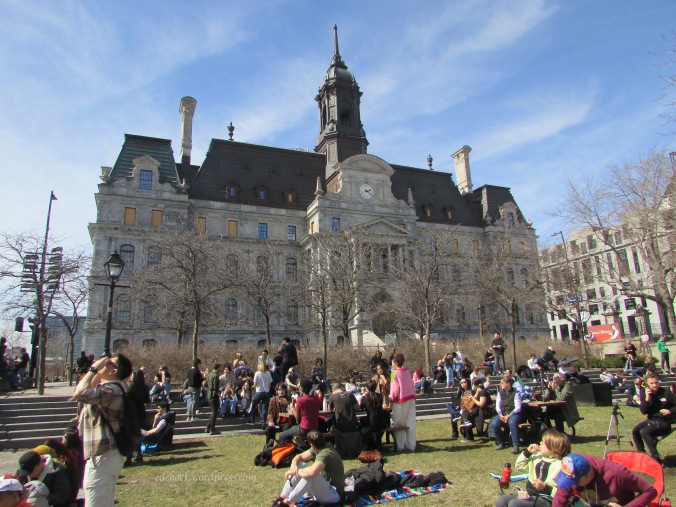


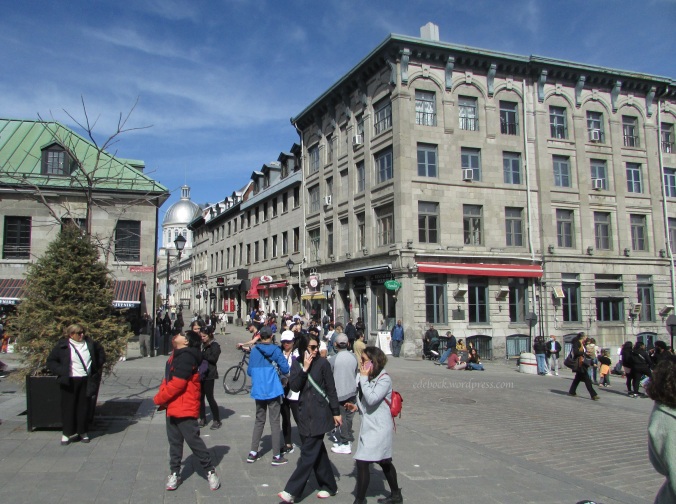
We were on cobblestoned Rue Saint-Paul, the oldest street in Montreal, as the clock approached 3:26 pm, the time of the total eclipse.
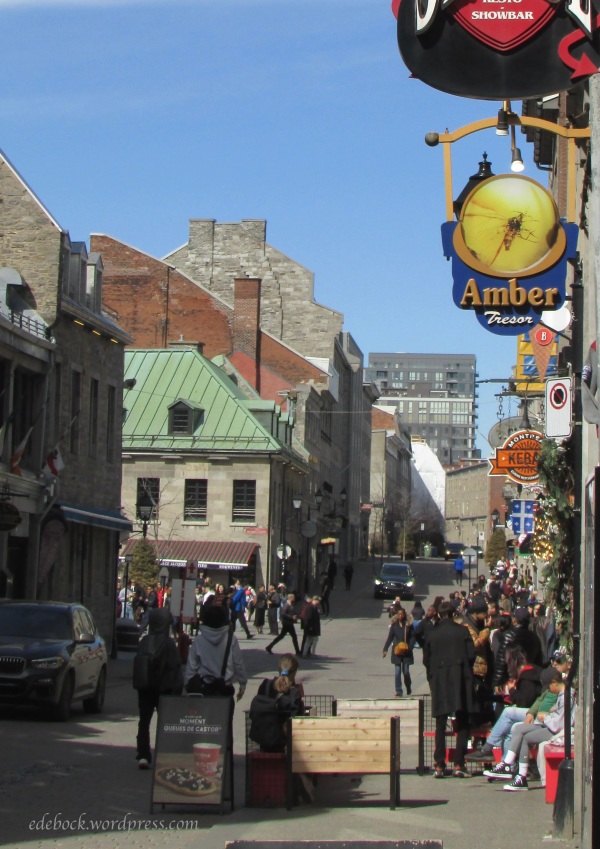
Though the light was odd, with less than 10 minutes to go, it really didn’t look like it was going to get completely dark. Then, within minutes, the sky darkened and the streetlights came on!
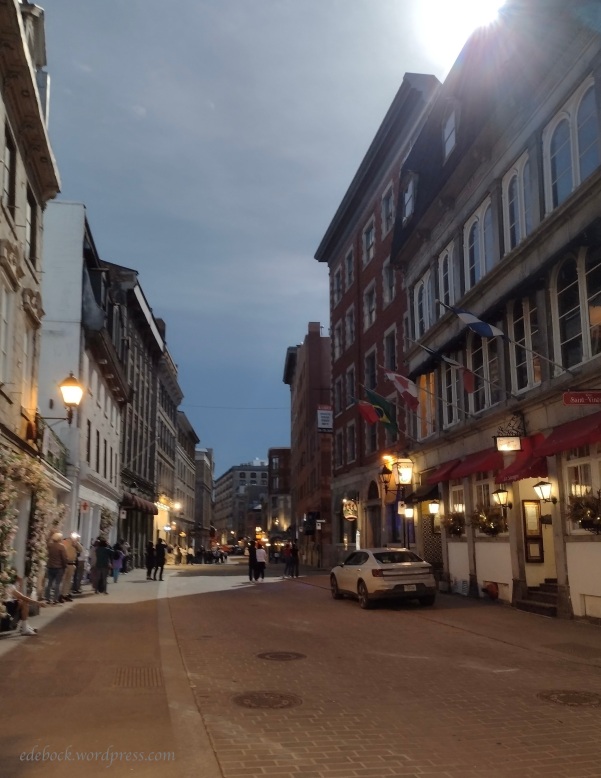
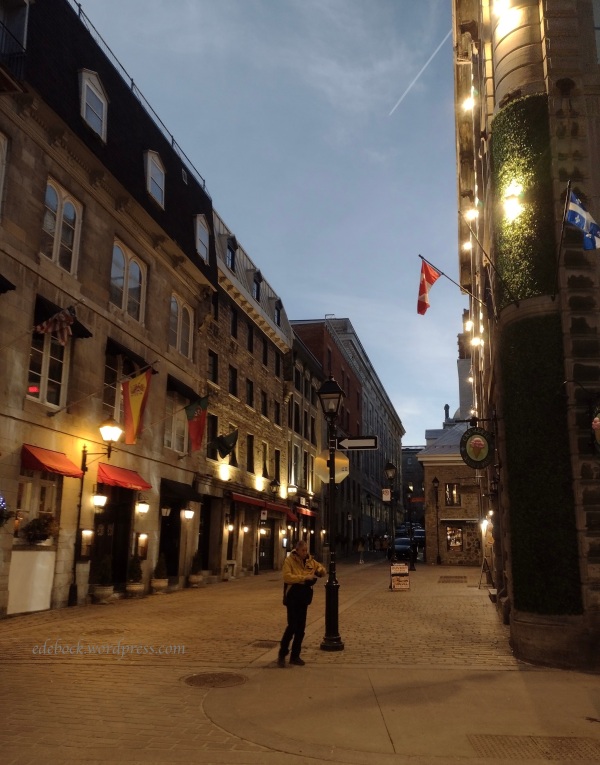
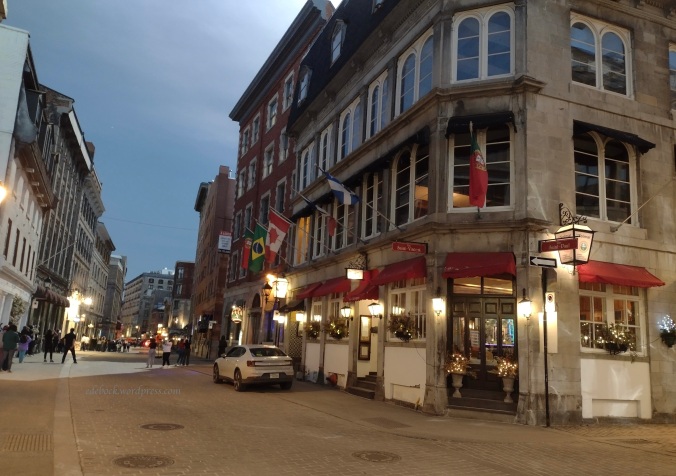
When the moment arrived, the moon covered the sun completely and for a very short time, we could look at the halo with the naked eye. A cheer erupted from the many thousands of people gathered throughout the area! We tried to get pictures, but the best we could do was this one that Amber took on her phone.

In less than two minutes, the excitement was over. The sun began to emerge again and the sky became light very quickly. Amber and I made our way back toward our hotel where we picked up our luggage and caught a taxi to the airport. We had walked 8 km, had a once in a lifetime experience, and made some amazing memories!


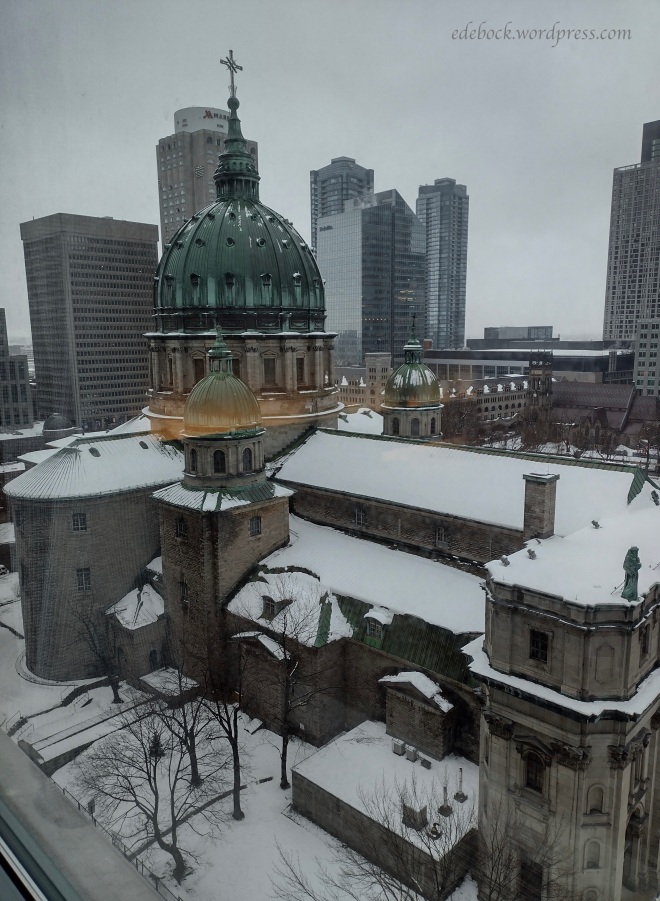



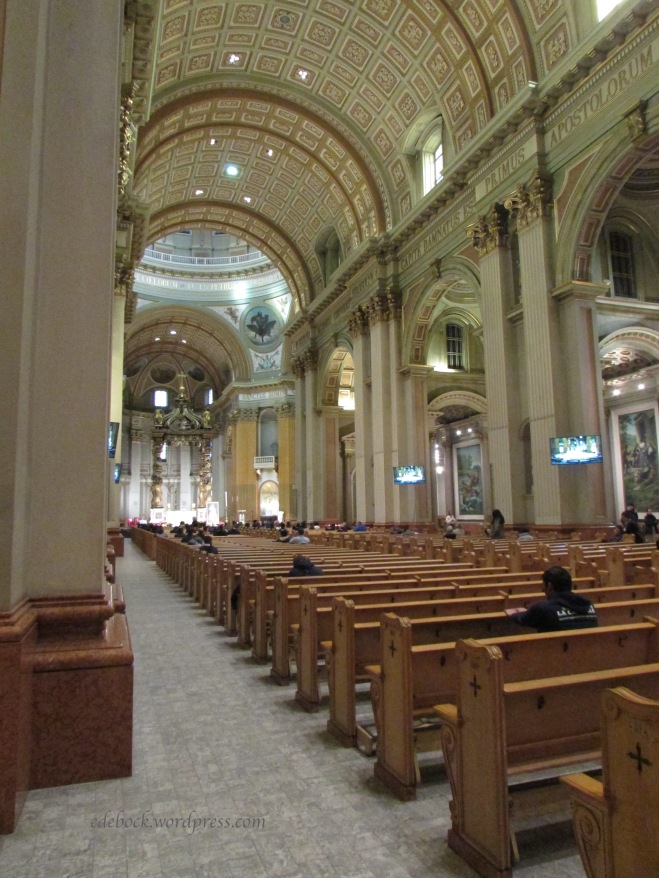
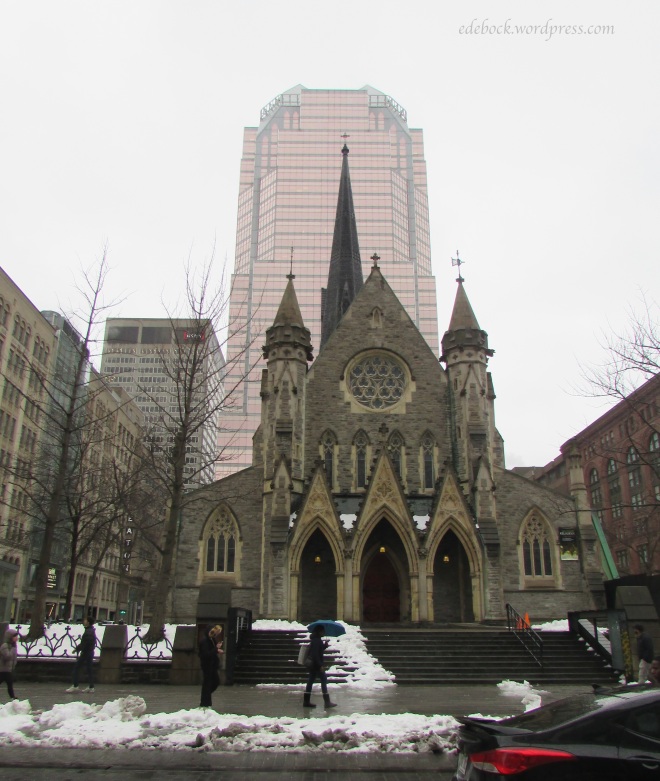
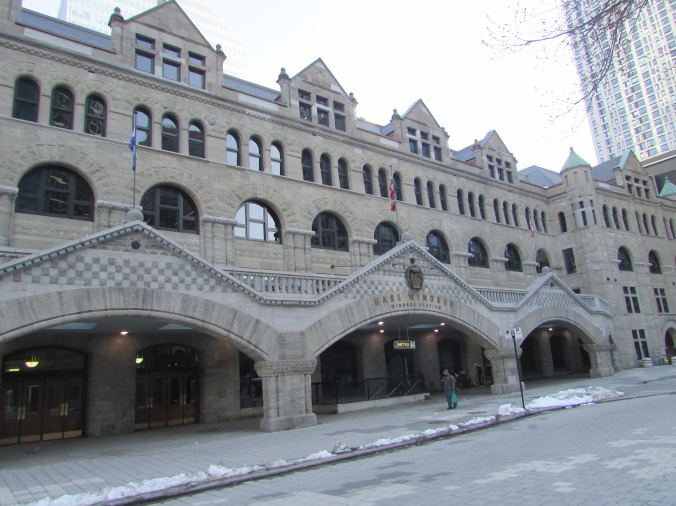
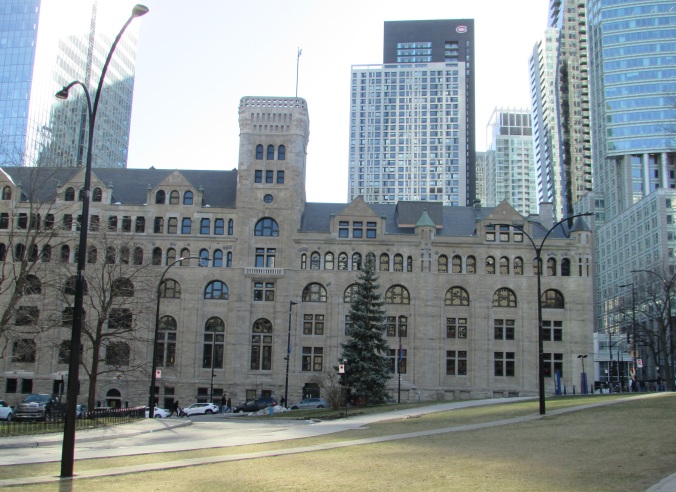

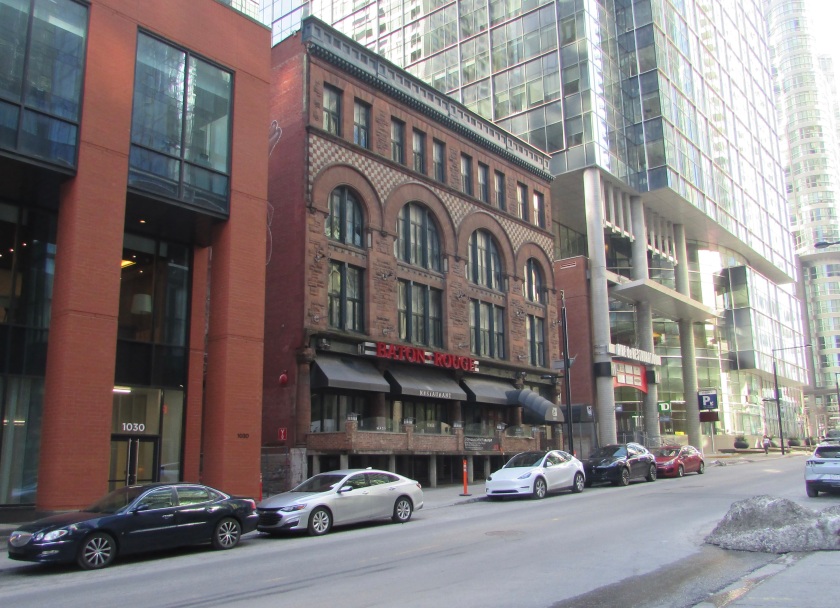
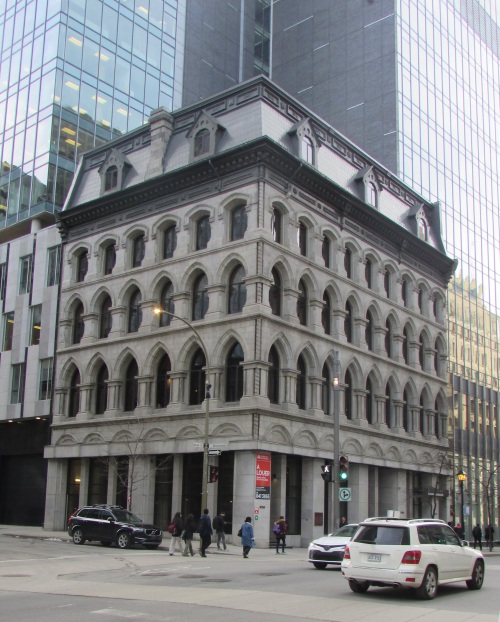
















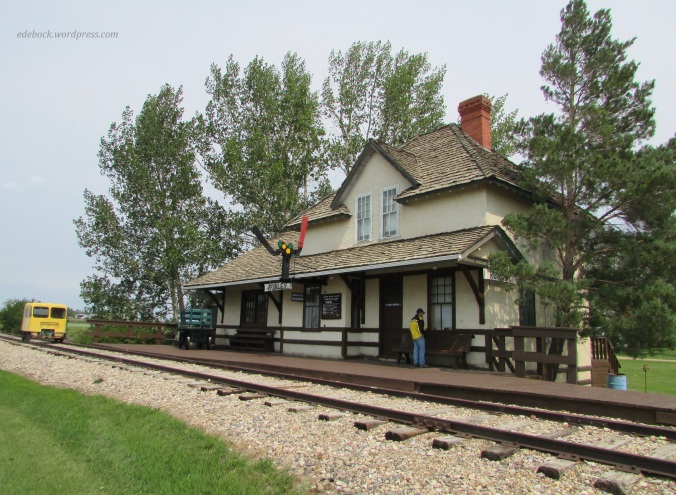
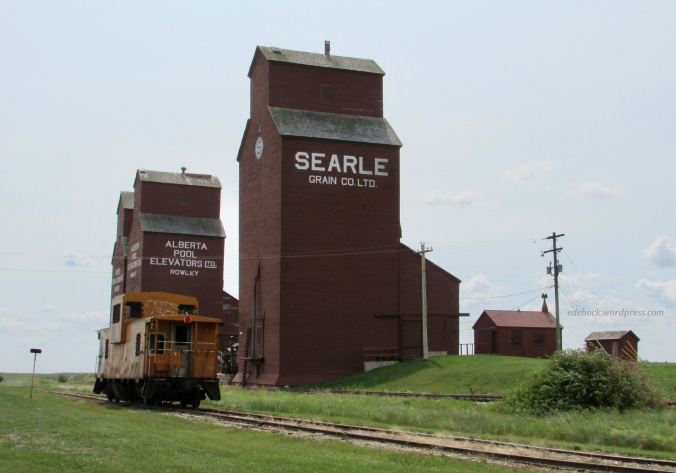
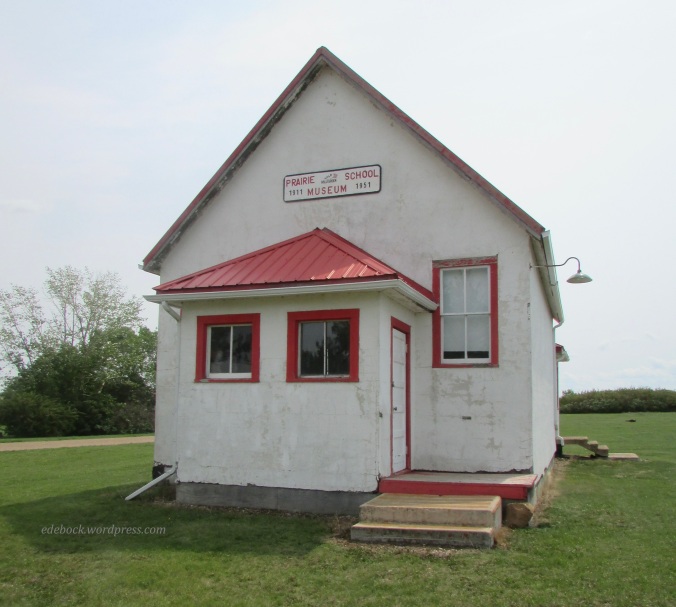
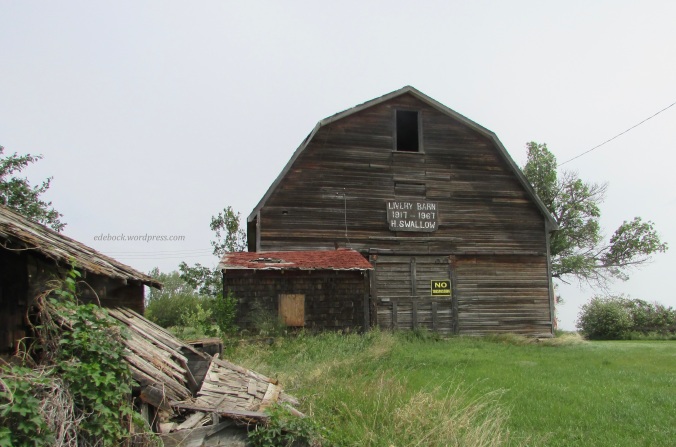
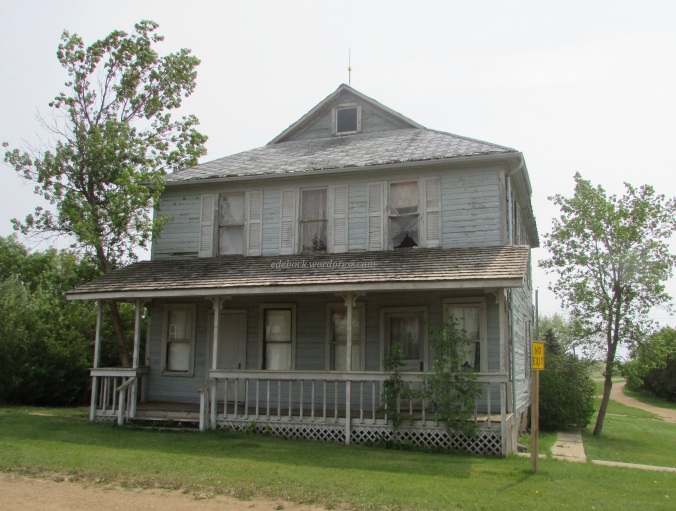
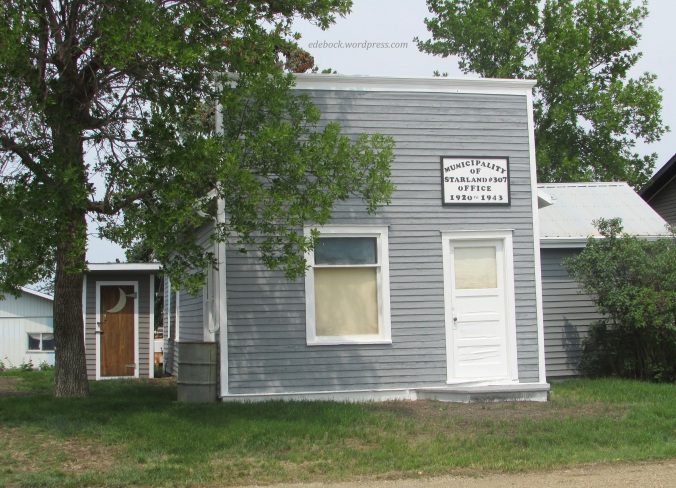
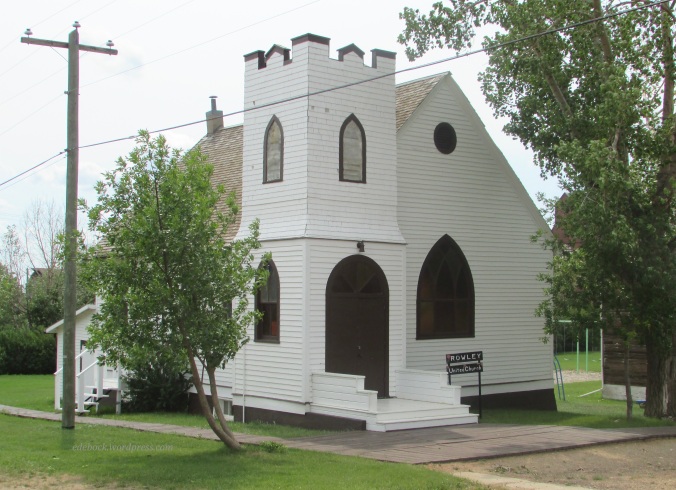
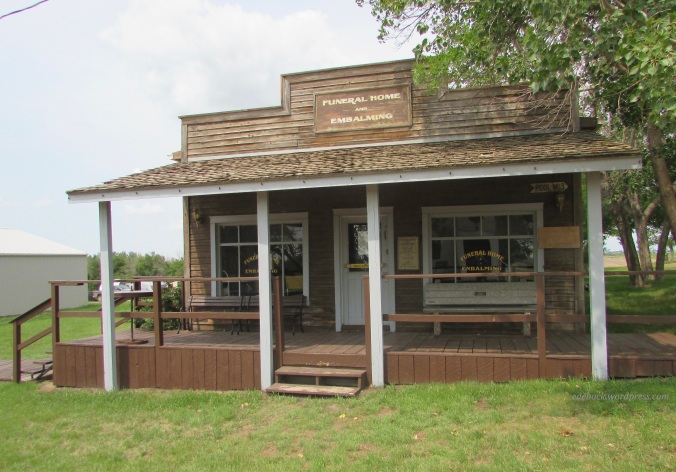



































 It was unseasonably warm when we boarded a plane in Calgary on Sunday morning, but even -1ºC (30ºF) is chilly. When we left the airport in Mexico City at almost midnight it was +19ºC (66ºF). How do you dress for a day with that kind of temperature variation?
It was unseasonably warm when we boarded a plane in Calgary on Sunday morning, but even -1ºC (30ºF) is chilly. When we left the airport in Mexico City at almost midnight it was +19ºC (66ºF). How do you dress for a day with that kind of temperature variation?









